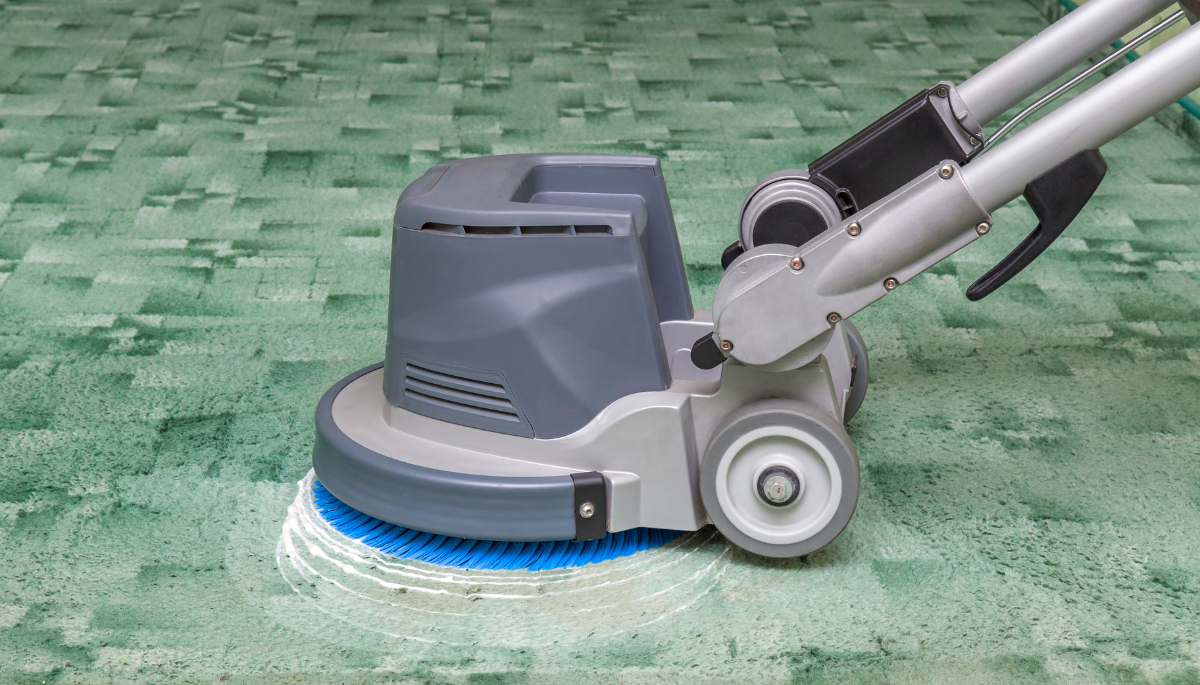Updated: 4/23/2019
Watering your grass seems easy enough, right? Well, you’d be surprised how easy it is to ruin brand new grass seed before you even have a chance at a beautiful yard. There are two things to always remember for watering new grass seed:
- Not enough water will kill the sprout.
- Too much water can leave less than ideal results, as well.
The simple advice is to keep it moist all the time. That can prove to be a complicated demand because of the numerous factors that make every grass growing situation unique. You only get one chance to germinate seeds correctly, so we’ll give you some tips and tricks to follow.
Let’s discuss your basic goal, what it will take to achieve it, what problems can develop, and how to solve them.
The Goal of Watering New Grass Seed:
Just throw a ton of water on it; is that all a new lawn planting needs? It’s more complicated than you think: The simple lawn sprinkler in this photo can pour out a lot of water. That may be your worst enemy.
Watering new grass seed puts you at risk for a mess:
- seed washed away or floated into clumps and bare spots;
- seed sticking to muddy shoes when you move the sprinkler;
- soft sinking soil leaves a trail of footprints across the lawn.
Plan to find a good balance of amount and frequency that fits your soil, weather conditions, and equipment (sprinkler).
Essential Grass Seed Truth to Consider:
All seeds require moisture and a certain temperature range before they begin to germinate. Once the germination process has begun, if conditions change, the seed or new sprout is vulnerable and can die.
If the seed or sprout dries out — it dies. Your mission then, is to provide adequate moisture at all times. The phase before you see any sprouts poking out is most critical. The germination time for grass seed ranges from 5 to 30 days depending on the variety, and it can be even longer than this in cooler temperatures.
Once the new grass is visible, the roots are also growing down into the soil. This happens quite quickly. As soil moisture below ground is more accessible to the roots, the plant is not so vulnerable now. However, don’t reduce the amount of watering on new grass seeds yet. Remember: Seeds will not sprout all at the same time. Seeds will be buried at different depths, absorb water differently, or be of different quality or maturity. Many seed mixtures are blends of multiple varieties that will have different characteristics affecting their development.
It is possible to increase the percentage of germinating seeds. Learn more in the article Grass Seed Germination.
How much to water new grass seed

Factors like shade and excessive sunlight make it difficult to determine a single watering amount needed for an entire area for each day it is required. Consider how the requirements for watering new grass seed can be altered for each of the following circumstances:
An existing lawn being over-seeded
Normally a lawn should be watered deeply but infrequently, but when you are watering for new grass seed, you must water every day. Set automatic timers for about 5 to 10 minutes, early in the morning, and again at mid-day. Watering done by hand or hose-end sprinklers must be consistent and evenly applied. It should provide approximately the same amount of moisture throughout, but less in shady areas. Twice daily watering is essential until the new grass is up, then after one more week, reduce to once per day. Adjust this pattern according to season and temperature demands.
Bare lawn areas being patched
If a lawn area is of substantial size or you have multiple areas, follow the same instructions as above. For smaller amounts or areas, if hand watering is practical, leave the lawn on its normal irrigation schedule for a single cycle each day and supplement the bare areas once or twice daily, or as needed, to keep the new seed moist.
New lawn areas sowed with grass seed
New lawn preparation done properly will have tilled the soil to loosen the ground for the new grass plants. This loose soil is prone to holding large amounts of water. Remember: Do not over-water! Some soil types will get spongy, and walking on it in this condition will leave serious depressions and cause compaction. Trying to correct a yard full of deep footprints is not a chore you want to attempt! The top inch of soil should stay moist at all times. This may take only 2-6 minutes, or longer, depending on your sprinkler system and the soil type. Use your best judgment, but moist, but not soggy is the plan! Repeat this process 2 or even 3 times each day (depending on the weather); watering new grass seed on new lawn areas does NOT require lengthy watering times. That simply sends the water deeper than it is needed at this early stage.
Tips for The Best Results
- Before watering the new grass seed even once, cover it with mulch.
- Avoid the hottest season or occasional heat-spells when planting. Watering new grass seed is enough of a challenge without taking on the heat as an enemy. If you have no choice, be vigilant and accept the need to apply water more frequently as it dries out more quickly.
- If you see moss or algae type growths showing up, especially in shady areas, there is too much moisture present. Reduce the frequency of watering and probably the length of time as well.
- For small patch projects; some seed brands are coated with a covering that holds moisture. This approach is effective, but may be too expensive to consider for a large area.
- Don’t buy a cheap lawn sprinkler. They do not evenly distribute the water, and often leak and cause puddles. You get what you pay for: Companies that research and test their products for effective coverage have to charge more.
(What’s your cost for seed, mulch, and …? Not to mention your time and labor. Get a good sprinkler and treat it as a valuable tool!) - Oscillating sprinklers are good for watering new grass seed in large areas where run-off is a concern. The back and forth motion allows time for soaking in, rather than having a constant spray on all areas.
Visit our Lawn Care Home Page to see what other topics may assist you in creating, maintaining and enjoying a beautiful, healthy lawn.






